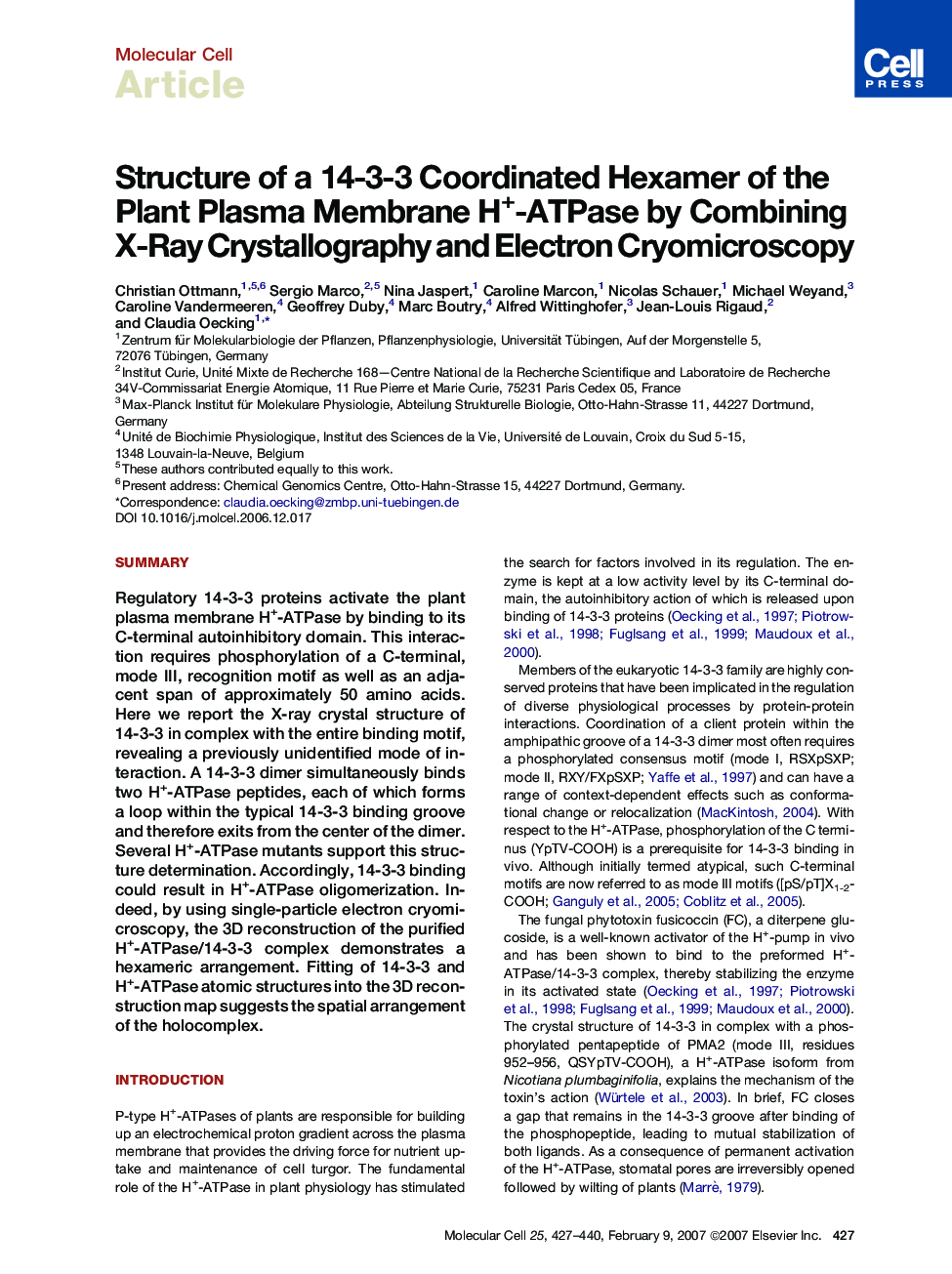| کد مقاله | کد نشریه | سال انتشار | مقاله انگلیسی | نسخه تمام متن |
|---|---|---|---|---|
| 1997958 | 1065632 | 2007 | 14 صفحه PDF | دانلود رایگان |

SummaryRegulatory 14-3-3 proteins activate the plant plasma membrane H+-ATPase by binding to its C-terminal autoinhibitory domain. This interaction requires phosphorylation of a C-terminal, mode III, recognition motif as well as an adjacent span of approximately 50 amino acids. Here we report the X-ray crystal structure of 14-3-3 in complex with the entire binding motif, revealing a previously unidentified mode of interaction. A 14-3-3 dimer simultaneously binds two H+-ATPase peptides, each of which forms a loop within the typical 14-3-3 binding groove and therefore exits from the center of the dimer. Several H+-ATPase mutants support this structure determination. Accordingly, 14-3-3 binding could result in H+-ATPase oligomerization. Indeed, by using single-particle electron cryomicroscopy, the 3D reconstruction of the purified H+-ATPase/14-3-3 complex demonstrates a hexameric arrangement. Fitting of 14-3-3 and H+-ATPase atomic structures into the 3D reconstruction map suggests the spatial arrangement of the holocomplex.
Journal: - Volume 25, Issue 3, 9 February 2007, Pages 427–440